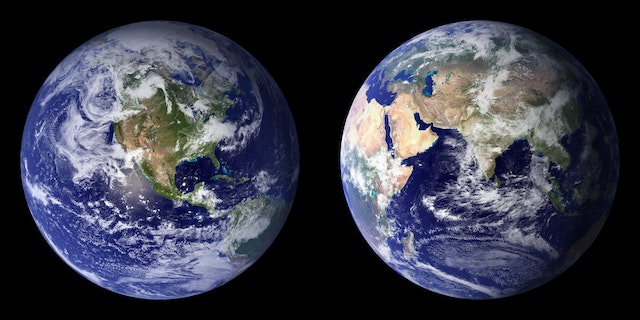
Is Earth an open or closed system? It is both. For some things it is open and for others, it is closed.
Earth is an open system for energy. Most of the energy on Earth comes from the sun. Energy enters Earth from outer space as well, but the sun is obviously the largest source of energy for us. The sun produces 384.6 septillion watts of power every second. (That’s 384,600,000,000,000,000,000,000,000 watts). As the sun is a sphere, that energy is released in 360 degrees in every direction, and only a small amount of it hits Earth. Despite that, every square meter of Earth receives 342 watts of energy from the sun every year. If we were able to create something like a Dyson sphere, we could capture all of the sun’s energy, but that is very far off in the future.
The energy that reaches Earth is used for all chemical processes on Earth, whether directly or indirectly. It powers photosynthesis, which means plants store the energy and then animals can eat the plants, taking that energy, and then we can eat the animals, taking their energy, and so on. We need a certain amount of energy and that is why Earth is an open system for energy. Energy comes in, and much of it is reflected back into space or released as heat or light. The Earth is an open system for energy because energy comes in and energy goes out. It has to be that way because the sun has so much energy that if we absorbed all of it, our planet would burn. Too much energy is a bad thing. Earth is slowly heating up at the moment because we are absorbing too much solar energy and it is wreaking havoc on our planet.
Earth is a closed system when it comes to matter. Almost all of the matter here on Earth arrived when Earth was formed, about 4.5 billion years ago. The rest was introduced when a planetoid struck the proto earth about 100 million years after that and made the moon. Whatever else there is has been introduced by meteors over the millennia. However, very little matter has been introduced since Earth and the moon formed. This means that all of the matter on Earth exists in a closed system. What we have now is what we had at the beginning. That isn’t to say it is the same. Molecules connect, come apart, and change into other molecules, but they don’t leave the planet.
There are two main reasons why Earth is a closed system for everything except energy and they are gravity and our magnetic field. Earth has a magnetic field that is generated by the solid iron core of the planet. The magnetic field extends about 65,000 km in front of Earth and about 300,000 km behind it, in a tear drop shape. The sun is constantly firing out charged particles that stream through the solar system. This is known as the solar wind. These charged particles hit our magnetic field and skip off into space, producing the aurora. If we didn’t have this magnetic field, these charged atoms would strip away the atmosphere from the planet. All of the gases that are not in the ground would be lost to space. The magnetic field prevents that and keeps our planet a closed system.
Gravity also keeps our planet a closed system. The gravity of Earth is 9.807 m/s2, which is enough gravity to pull all of the molecules on Earth down towards the center. To escape from Earth’s gravity, it is necessary to travel at a speed of 11,186 km/s. If an object cannot travel at that speed or more, it cannot leave the planet. Nearly all of the molecules on Earth cannot move at that speed, which means they are trapped here in a closed system. The only molecules that can come close are hydrogen because they are the lightest molecules. The more mass a molecule has, the slower it travels, which is why a light photon has zero mass. Hydrogen is the lightest and the fastest molecule and it sometimes travels fast enough to exceed escape velocity. Because of this, Earth is not a 100% closed system, and we are losing about 95,000 tons of hydrogen into space every year. That is an insignificantly small amount, though, and Earth is all but a 100% closed system for matter. And this is what I learned today.
Photo by Pixabay: https://www.pexels.com/photo/planet-earth-41950/
Sources
https://www.swsc-journal.org/articles/swsc/full_html/2017/01/swsc160018/swsc160018.html
https://www.uvm.edu/~cmehrten/courses/earthhist/Earth%20Closed%20System.pdf
http://www.mcc.cmu.ac.th/mccwwwthai/graduate/Agro723/Reading_Materials/Our_Planet/Planet.html
https://mynasadata.larc.nasa.gov/basic-page/systems-thinking-about-earth-system
https://sci.esa.int/web/cluster/-/58028-the-curious-case-of-earth-s-leaking-atmosphere
https://phys.org/news/2015-12-sun-energy.html
https://www.nasa.gov/pdf/135642main_balance_trifold21.pdf
https://www.sciencefocus.com/planet-earth/is-the-weight-of-the-earth-changing/
https://www.livescience.com/earth-magnetic-field.html
